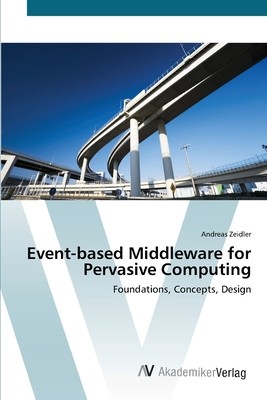
- We will send in 10–14 business days.
- Author: Andreas Zeidler
- Publisher: AV Akademikerverlag
- Year: 2012
- Pages: 196
- ISBN-10: 3639406680
- ISBN-13: 9783639406689
- Format: 15.2 x 22.9 x 1.1 cm, minkšti viršeliai
- Language: English
- SAVE -10% with code: EXTRA
Reviews
Description
Revision with unchanged content. Mobile applications running on personal devices, like smartphones, PDAs, or laptop computers, create a fascinating market for many new mobile services. Mobile commerce, location-based services, multimedia messaging, or mobile ga-ming are expected to constitute a main driving-force for technological ad-vance-ments, creating a new source of revenue for infrastructure providers and developers. Based on what we observe today, the logical next steps lead to integrated infrastructures and applications supporting "pervasive com-pu-ting". What-ever this future will look like, the basic cornerstones will be: (i) highly no-madic users, (ii) personalized devices running smart applications, (iii) per-va-sive smart infrastructures, and (iv) efficient communication for end-to-end in-tegration of all building blocks. This book introduces the amazing world of pervasive computing, leads step-by-step through the new design challenges for pervasive computing appli-ca-tions and identifies the key challenges for engineering middleware supporting per-vasive applications. Based on the well-known publish/subscribe paradigm it demonstrates how middleware systems can be designed to explicitly make use of "context" of users and applications. It then shows how context in-for-ma-tion can be leveraged for optimizing the efficiency of communication in-side a notification service.
EXTRA 10 % discount with code: EXTRA
The promotion ends in 21d.17:24:29
The discount code is valid when purchasing from 10 €. Discounts do not stack.
- Author: Andreas Zeidler
- Publisher: AV Akademikerverlag
- Year: 2012
- Pages: 196
- ISBN-10: 3639406680
- ISBN-13: 9783639406689
- Format: 15.2 x 22.9 x 1.1 cm, minkšti viršeliai
- Language: English English
Revision with unchanged content. Mobile applications running on personal devices, like smartphones, PDAs, or laptop computers, create a fascinating market for many new mobile services. Mobile commerce, location-based services, multimedia messaging, or mobile ga-ming are expected to constitute a main driving-force for technological ad-vance-ments, creating a new source of revenue for infrastructure providers and developers. Based on what we observe today, the logical next steps lead to integrated infrastructures and applications supporting "pervasive com-pu-ting". What-ever this future will look like, the basic cornerstones will be: (i) highly no-madic users, (ii) personalized devices running smart applications, (iii) per-va-sive smart infrastructures, and (iv) efficient communication for end-to-end in-tegration of all building blocks. This book introduces the amazing world of pervasive computing, leads step-by-step through the new design challenges for pervasive computing appli-ca-tions and identifies the key challenges for engineering middleware supporting per-vasive applications. Based on the well-known publish/subscribe paradigm it demonstrates how middleware systems can be designed to explicitly make use of "context" of users and applications. It then shows how context in-for-ma-tion can be leveraged for optimizing the efficiency of communication in-side a notification service.


Reviews